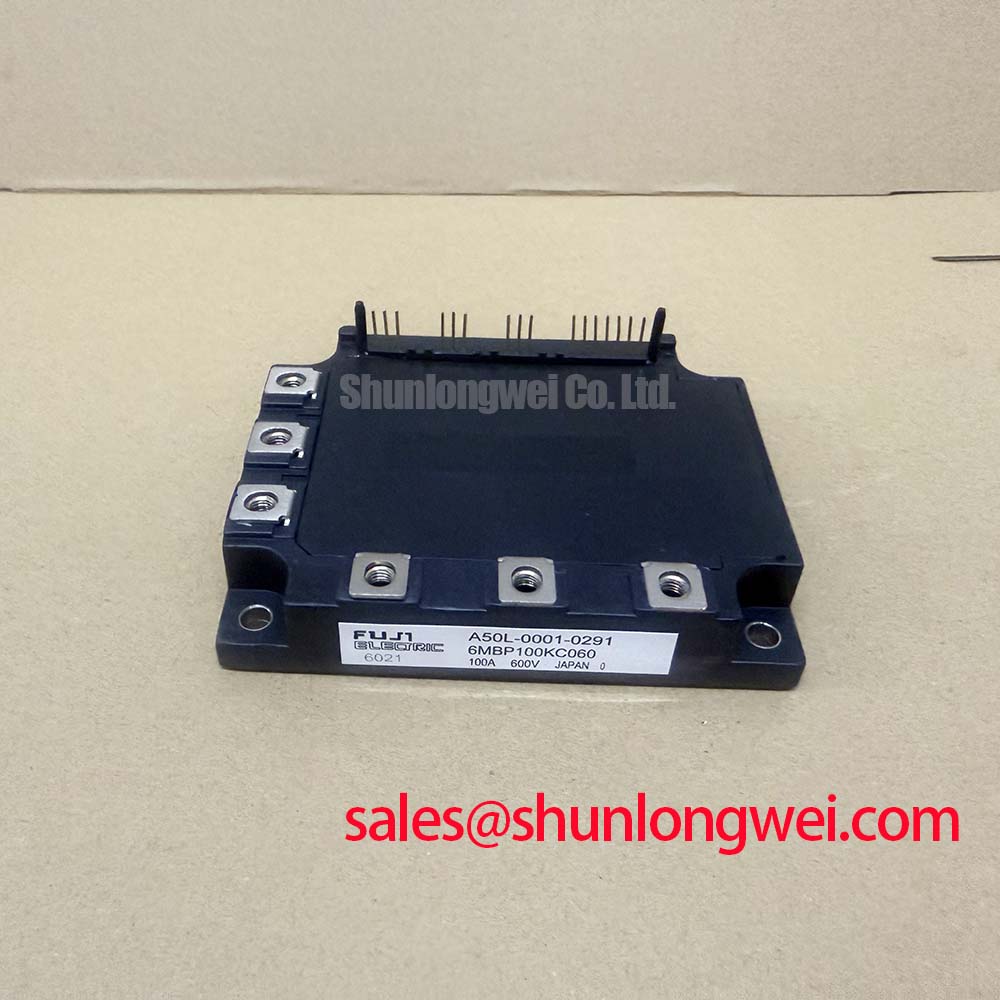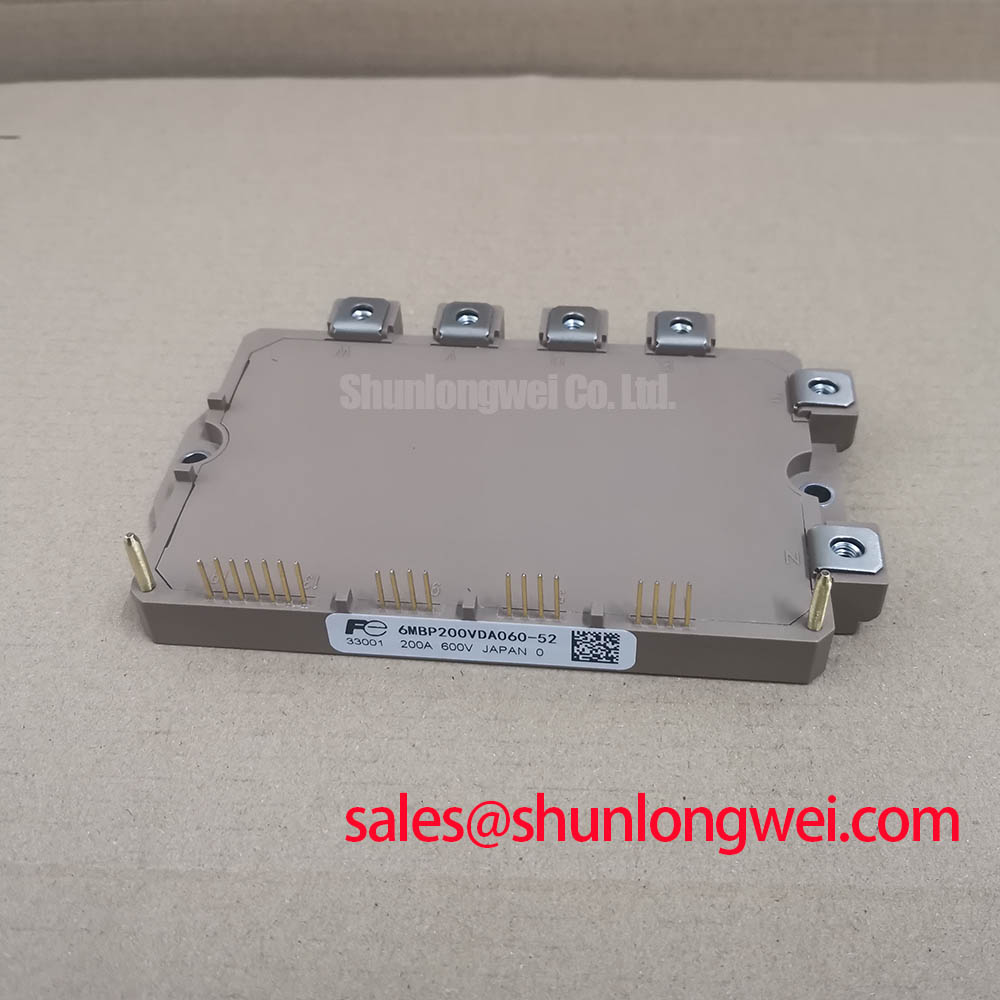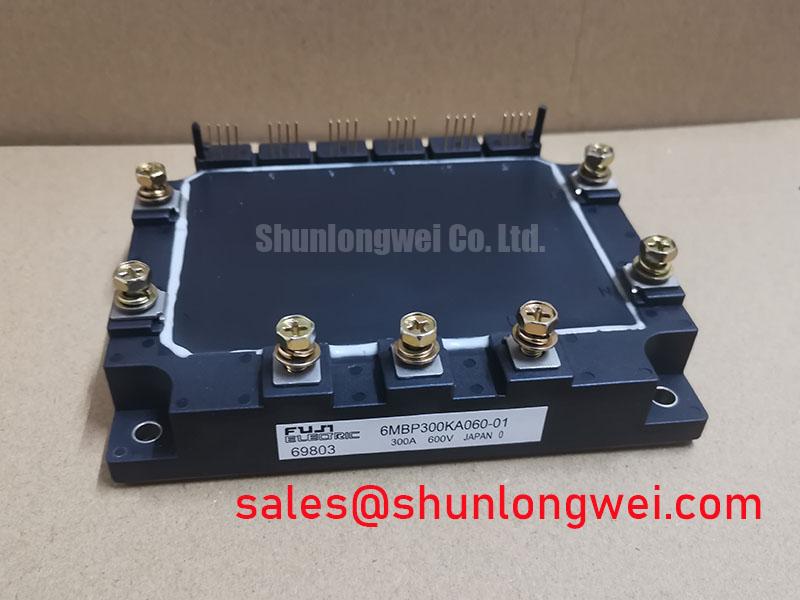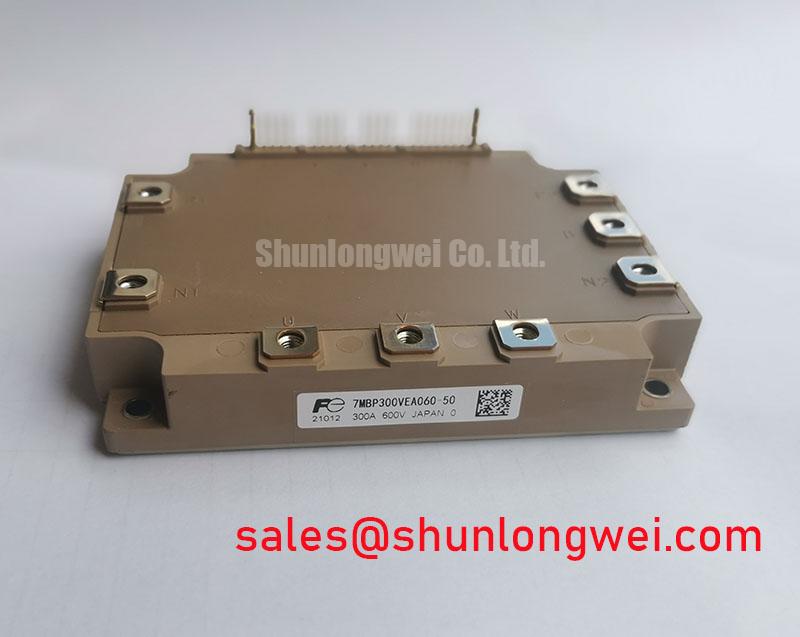Content last revised on November 15, 2025
6MBP100KC060 IGBT: Integrated 100A, 600V PIM Module
Streamlining Compact Motor Drives with an All-in-One Power Stage
At the core of efficient power conversion, Power Integrated Modules (PIMs) represent a significant leap in design simplification. The Fuji Electric 6MBP100KC060 embodies this principle, delivering a complete 7-in-1 power stage that streamlines the development of compact motor drives and power converters. This module consolidates the inverter and brake circuits, offering key specifications of 600V | 100A (Inverter) | Integrated Thermistor. This high level of integration directly translates to tangible engineering benefits: a simplified circuit layout and accelerated assembly time. For engineers asking how to reduce the physical footprint and component count of a variable frequency drive (VFD), the 6MBP100KC060 provides a direct answer by combining multiple power stages into a single, thermally efficient package.
Streamlining Designs in Industrial Automation
The integrated nature of the Fuji Electric 6MBP100KC060 provides substantial value in applications where space, assembly cost, and time-to-market are critical design constraints. Its consolidated architecture makes it a cornerstone component for a range of industrial automation systems.
- Compact Variable Frequency Drives (VFDs): By combining a three-phase inverter and a brake chopper, the module drastically reduces the PCB footprint and complexity of low-to-medium power motor drives, typically in the 7.5 kW to 15 kW range.
- Servo Drives: The module's performance supports the dynamic switching required in precision motion control systems for robotics and CNC machinery, where compact design is essential for integration into robotic arms or control cabinets.
- General Purpose Inverters: For applications like commercial HVAC systems, pumps, and fans, the 6MBP100KC060 simplifies manufacturing and improves the reliability of the power conversion stage.
- Uninterruptible Power Supplies (UPS): Its integrated configuration provides a robust building block for the inverter stage in smaller commercial UPS systems, reducing component count and potential points of failure.
For industrial drives requiring high reliability under 400V AC line conditions, the 6MBP100KC060's 600V rating and integrated thermal monitoring offer an optimal balance of performance and design simplicity.
Data-Informed Component Evaluation
Evaluating the right power module requires a clear, data-based comparison. The following table presents key specifications to assist engineers in assessing how the 6MBP100KC060 fits within specific design parameters, particularly when considering different voltage classes. This information is intended to empower your technical decision-making process.
| Parameter | Fuji Electric 6MBP100KC060 | Comparative Module: 6MBP75RS120 | Engineering Implication |
|---|---|---|---|
| Collector-Emitter Voltage (Vces) | 600V | 1200V | The 600V rating is optimized for 200-400V AC line applications, often yielding lower Vce(sat), while the 1200V part is suited for higher voltage systems (e.g., 690V AC lines). |
| Continuous Collector Current (Ic) at Tc=80°C | 100A (Inverter) | 75A (Inverter) | The 6MBP100KC060 offers higher current handling capability for its voltage class, supporting more powerful motor applications. |
| Collector-Emitter Saturation Voltage (Vce(sat)) Max | 2.7V at 100A | 2.15V at 75A | Indicates the conduction losses. The choice depends on the trade-off between voltage blocking capability and on-state efficiency at the target operating current. |
| Configuration | 7-in-1 (Three-Phase Inverter + Brake) | 6-in-1 (Three-Phase Inverter) | The integrated brake chopper in the 6MBP100KC060 simplifies regenerative braking circuit design, reducing external component needs. |
Dissecting the Module's Integrated Architecture
The core advantage of the Fuji Electric 6MBP100KC060 lies in its intelligent consolidation of essential power components. This design approach can be compared to using a prefabricated structural unit in construction versus assembling a wall brick by brick; it accelerates the process and reduces variability. Internally, the module houses seven IGBTs and seven free-wheeling diodes (FWDs). Six of each are arranged in a three-phase bridge configuration for the inverter, while the seventh pair forms the brake chopper circuit. What is the benefit of an integrated thermistor? It provides real-time thermal feedback directly from the module's substrate, enabling more accurate and responsive over-temperature protection. This eliminates the need for external NTC thermistors and their associated wiring and mounting, further simplifying the mechanical and electrical assembly. This integrated approach not only reduces the physical size of the final power system but also minimizes parasitic inductance between components, which can contribute to better switching performance and lower EMI. For a deeper understanding of IGBT characteristics, explore this guide on decoding IGBT datasheets.
Core Specifications for System Design
Accurate system modeling and performance prediction depend on key datasheet values. The following parameters for the 6MBP100KC060 are fundamental for drive design, thermal simulation, and ensuring operational reliability.
| Key Parameter | Value |
|---|---|
| Max Collector-Emitter Voltage (Vces) | 600V |
| Max Continuous Collector Current (Ic at Tc=80°C) | 100A (Inverter), 50A (Brake) |
| Max Collector-Emitter Saturation Voltage (Vce(sat) at Tj=125°C) | 2.7V (at 100A) |
| Max Power Dissipation (Pc at Tc=25°C) | 390W (Inverter), 208W (Brake) |
| Thermal Resistance (Rth(j-c)) per IGBT | 0.32 °C/W |
| Short Circuit Withstand Time (Tsc) | ≥ 10µs (Vcc=400V, Vge=15V) |
Interpreting the Critical Parameters
- Vce(sat): This parameter is a primary indicator of conduction losses. A lower Vce(sat) means less heat is generated when the IGBT is fully on. Think of it as electrical friction; the 2.7V maximum at full load and temperature is a critical input for calculating the thermal performance of your system.
- Rth(j-c): Thermal resistance from junction to case dictates how effectively heat can be moved from the active silicon chip to the heatsink. A lower value is always better. This figure is essential for designing a cooling system that keeps the junction temperature within its safe operating limits. Further insights on this can be found in discussions on IPM vs. discrete IGBTs, where thermal management is a key differentiator.
Meeting the Demand for Compact Power Systems
The trend in industrial electronics is clear: greater functionality in smaller, more cost-effective packages. PIMs like the 6MBP100KC060 are a direct response to this market driver. By integrating the core of a motor drive into one component, manufacturers can reduce their supply chain complexity, shorten assembly lines, and improve production throughput. Furthermore, this level of integration enhances system-level reliability. With fewer discrete components and interconnects, there are fewer potential points of failure from solder joint fatigue or connection vibration. This module allows designers to focus on higher-level challenges like control algorithms and user interfaces, rather than the intricacies of power stage layout, helping them bring more competitive products to market faster.
A Strategic Enabler for Next-Generation Automation
The Fuji Electric 6MBP100KC060 is more than a set of specifications; it represents a design philosophy centered on simplification and efficiency. As automation becomes more decentralized and embedded within machinery, the need for compact, reliable, and easy-to-integrate power solutions will only intensify. Modules that consolidate functionality, like this PIM from Fuji Electric, are strategic enablers for this evolution. They provide the foundational hardware that allows engineers to build smaller, smarter, and more cost-effective systems, paving the way for the next generation of industrial control and automation technology.














